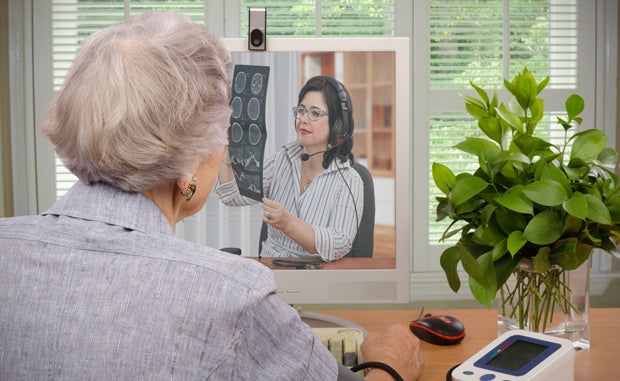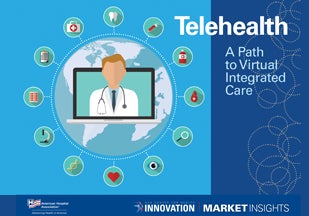

Is Your Telehealth Program Built for the New Health Care World?

A funny thing happened on the way to telehealth’s rapid exponential rise in use during the COVID-19 pandemic. Many hospitals and health systems that had been refining their virtual care services and platforms at a methodical pace suddenly had to quickly ramp up access to technology platforms and train clinicians on the platforms, patient-monitoring tools and messaging apps.
Some organizations that were conducting a couple thousand telehealth visits a year quickly found themselves conducting that many virtual visits in a single day. And now, as is often the case when a sea change occurs so rapidly, many thought leaders are proclaiming this to be health care’s new normal.
Time will tell, but one significant change is already in motion. Many hospitals and health systems — large and small — are reassessing their telehealth strategies in light of their COVID-19 experiences.
They’re examining how to move beyond the foundational stage of strategic program development, ways to revise telehealth’s governance structure to involve more stakeholders and how to build awareness of and optimize all virtual care offerings — all while maintaining momentum in the pace of change fueled by the pandemic.
 So, what’s next? To advance the adoption, sustainability and optimization of telehealth services, a maturity model can be helpful to set criteria for competency, capability and level of sophistication, notes an AHA Market Insights report, “Telehealth: A Path to Virtual Integrated Care.”
So, what’s next? To advance the adoption, sustainability and optimization of telehealth services, a maturity model can be helpful to set criteria for competency, capability and level of sophistication, notes an AHA Market Insights report, “Telehealth: A Path to Virtual Integrated Care.”
The Hospital Telehealth Maturity Model developed by Manatt provides a framework for measuring and developing existing and prospective telehealth services by program and platform with prescribed best-practice parameters.
This Market Insights report also provides guidance for hospitals and health systems in different settings such as community hospitals, academic medical centers, urban and rural provider organizations. Each setting analysis includes maturity model indicators, steps to consider and opportunities for improvement.
The report notes that most hospitals and health systems, regardless of setting, are moving from the foundational to the advanced level on the maturity model with opportunities to gain further efficiencies by scaling opportunities across the enterprise and addressing gaps in care as well as developing virtual care strategies. The key now will be to capitalize on these opportunities, particularly with regulations relaxed during the pandemic (and perhaps beyond) and reimbursement opportunities for telehealth expanding.
Barbara Edson, R.N., executive director of UNC Health’s Virtual Care Center, recently led an AHA Team Training webinar designed to help provider organizations employ a team-based approach to developing and refining virtual care strategy and programming, implementing project management and monitoring performance that can help sustain program growth.
Edson recommends employing a broad team-based approach when considering stakeholders to inform organizational telehealth strategy. UNC Health plans to form end-user groups to capture the voice of the customer, including patients and families. In addition to clinical staff and providers, UNC will include others responsible for areas like technology and equipment, compliance, reimbursement, risk management, data reporting and analytics, patient engagement and experience, marketing, communications and consumer research, education, training and operational workflows.



